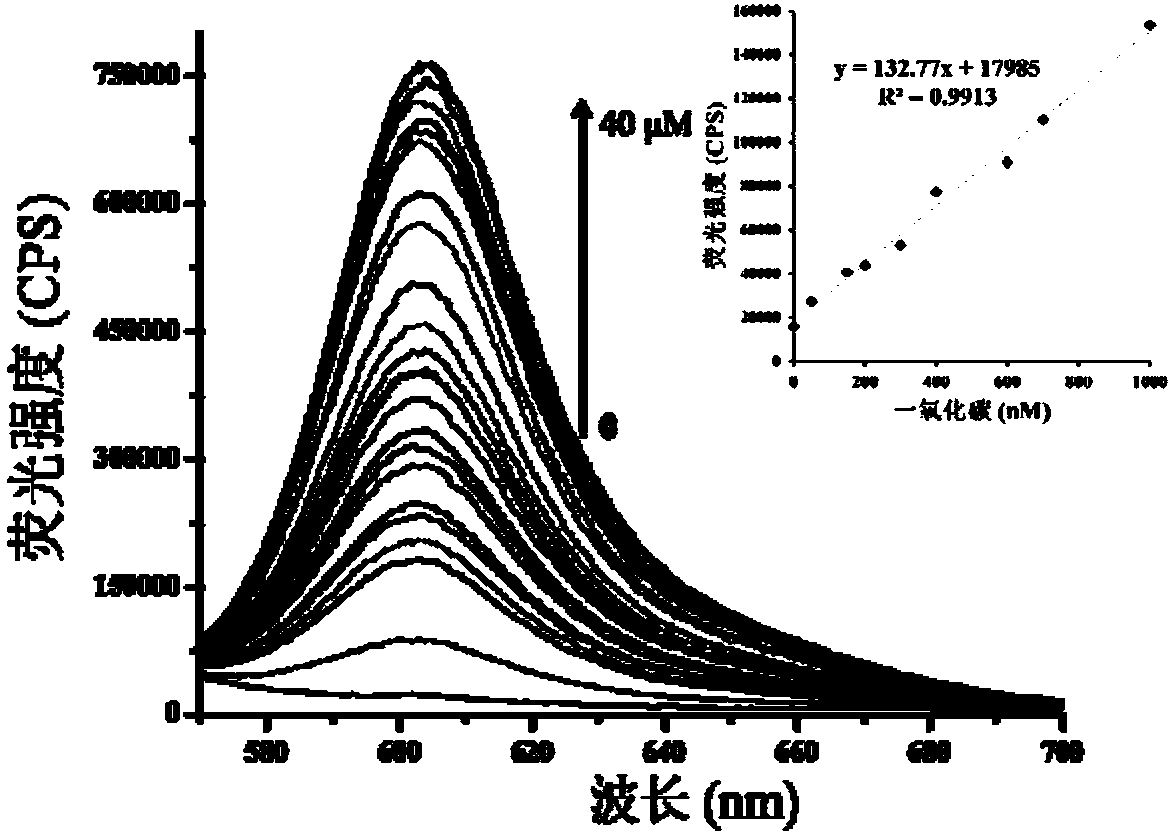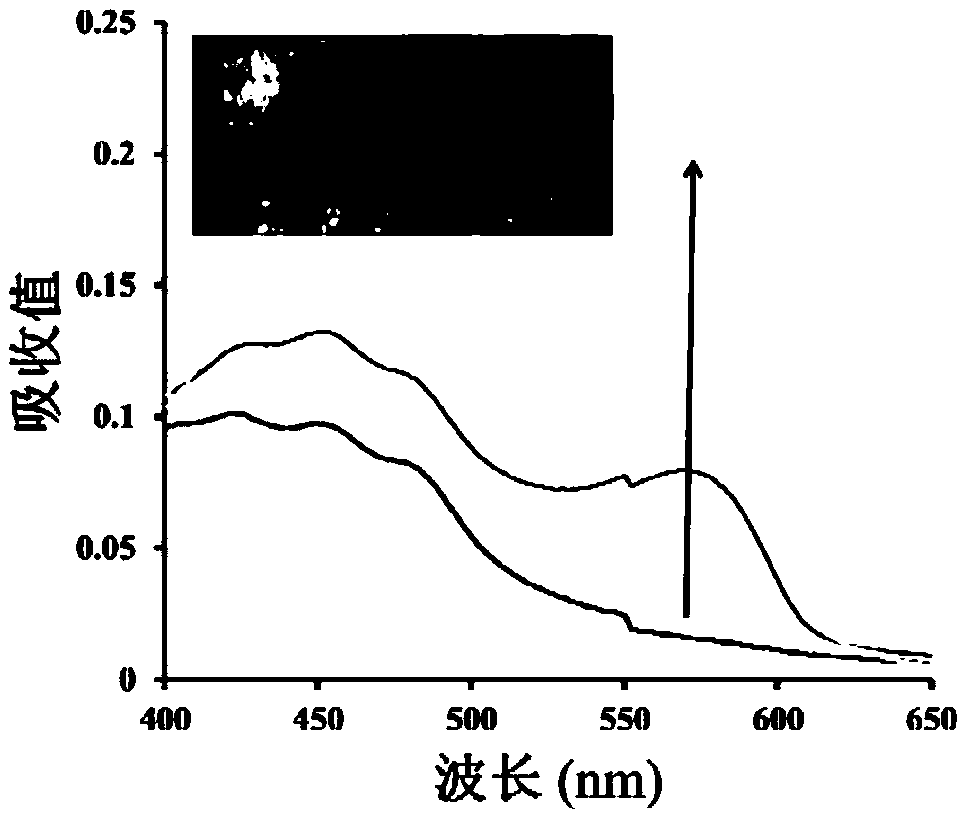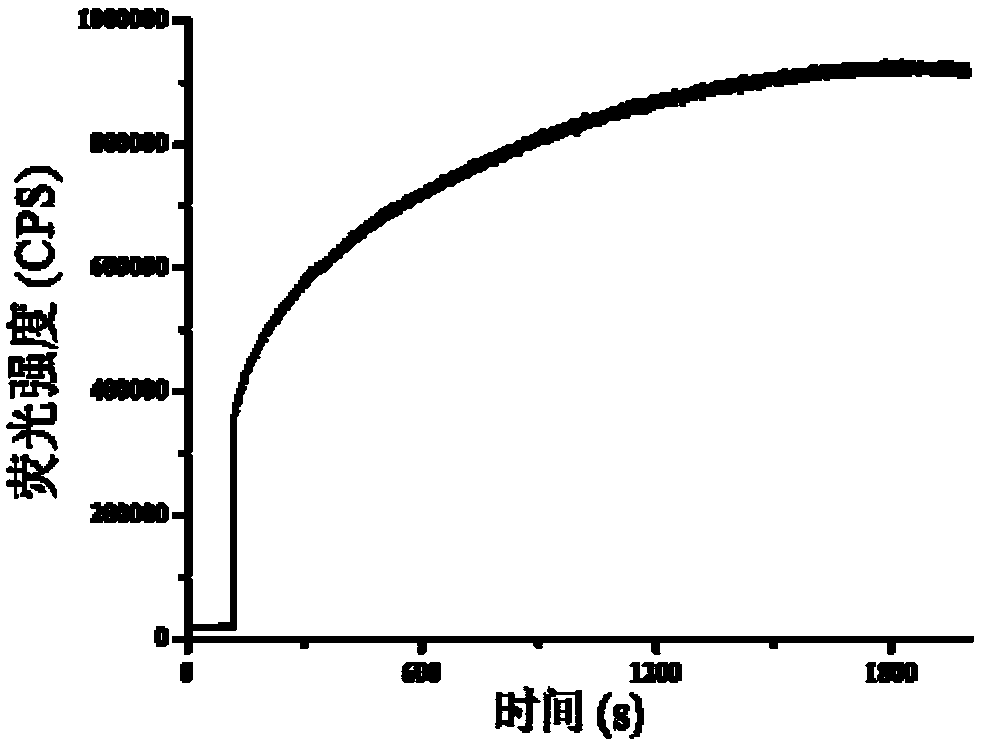Long-wavelength ultra-sensitive carbon monoxide colorimetric fluorescent probe
A technology of compound and branched alkoxy group, which is applied in the field of long-wavelength ultrasensitive carbon monoxide colorimetric fluorescent probes, can solve the problems of insufficient response speed, complex synthesis, and short emission wavelength, so as to facilitate popularization and application and simple synthesis , good stability
- Summary
- Abstract
- Description
- Claims
- Application Information
AI Technical Summary
Problems solved by technology
Method used
Image
Examples
Embodiment 1
[0033]
[0034] (Scheme 1) Dissolve 387 (1 mmol) cyanine fluorophore compound in 15 mL of dichloromethane, then add 120 mg (1 mmol) allyl chloroformate and 101 mg (1 mmol) triethylamine, then The reaction was stirred at 25° C. for 3 h, and after the reaction was completed, the dichloromethane was evaporated to dryness to obtain the crude product. Finally, a mixed system of dichloromethane and petroleum ether (3:1, v / v) was used for column chromatography to obtain 292 mg of a yellow pure product with a yield of 62%.
[0035] (Scheme 2) Dissolve 387 (1 mmol) cyanine fluorophore compound in 15 mL of dichloromethane, then add 144 mg (1.2 mmol) allyl chloroformate and 101 mg (1 mmol) triethylamine, then The reaction was stirred at 25° C. for 3 h, and after the reaction was completed, the dichloromethane was evaporated to dryness to obtain the crude product. Finally, a mixed system of dichloromethane and petroleum ether (3:1, v / v) was used for column chromatography to obtain 306 m...
Embodiment 2
[0040] figure 1 It is the change graph of the fluorescence spectrum after adding carbon monoxide (0-40 μM) to the probe (5 μM). Take 50μL from the probe mother solution and put it into 10mL test system (containing 10μM Pb 2+ , PBS 7.4, 5mM), configure multiple parallel samples. Then carbon monoxide of different concentrations (different volumes were pipetted from 1 millimolar carbon monoxide mother liquor) was added into the test system, shaken evenly and left to stand for 20 minutes. Fluorescence intensity changes were measured with a fluorescence spectrophotometer. It can be clearly seen from the figure that with the increase of the concentration of carbon monoxide added, the fluorescence intensity at 605 nm of the solution gradually increases. Moreover, it can be seen from the illustration that the fluorescence intensity at 605nm has a good linear relationship with the added carbon monoxide concentration (0-1000nM), which proves that the quantitative analysis of carbon m...
Embodiment 3
[0042] image 3 It is the change graph of the fluorescence spectrum with time after the probe (5 μM) is added with carbon monoxide (30 μM). Take 50 μL from the probe mother solution and place it in 10 mL of the test system (containing 10 μM Pd 2+ , PBS 7.4, 5mM). Then 30 μM carbon monoxide (250 μL was pipetted from 1 mM carbon monoxide mother solution) was added into the test system, and the fluorescence intensity change was measured with a fluorescence spectrophotometer immediately after shaking evenly. It can be clearly seen from the figure that when carbon monoxide is added, the fluorescence intensity reaches the maximum value and remains unchanged after 30 minutes of detection, which shows that the probe reacts rapidly with carbon monoxide and can provide a rapid analysis method for the determination of carbon monoxide.
PUM
 Login to View More
Login to View More Abstract
Description
Claims
Application Information
 Login to View More
Login to View More - R&D
- Intellectual Property
- Life Sciences
- Materials
- Tech Scout
- Unparalleled Data Quality
- Higher Quality Content
- 60% Fewer Hallucinations
Browse by: Latest US Patents, China's latest patents, Technical Efficacy Thesaurus, Application Domain, Technology Topic, Popular Technical Reports.
© 2025 PatSnap. All rights reserved.Legal|Privacy policy|Modern Slavery Act Transparency Statement|Sitemap|About US| Contact US: help@patsnap.com



